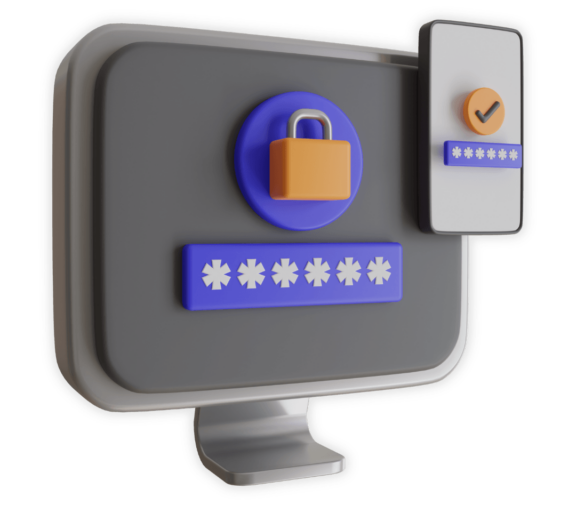As cyber threats become more prevalent, so do the strategies for defending against them. Since the primary goal of any business is to safeguard against these threats, it’s crucial to proactively identify potential risks and implement comprehensive measures to prevent their future impact.
What is Web Application Penetration Testing?
Web application penetration testing, commonly known as pen testing, is a security assessment process that simulates attacks on a web application to uncover vulnerabilities that could be exploited by malicious actors. This testing evaluates the application’s architecture, design, and configuration, aiming to identify weaknesses before they can be exploited in a real attack.
These tests are conducted by our team of cyber security, incident response and security auditing experts – combining their wealth of knowledge from responding to real incidents.
Why is Web Application Testing important to a business or organisation?
Web application penetration testing is crucial for businesses and organisations for several reasons, including:

Identifying Vulnerabilities: It uncovers security weaknesses in web applications before malicious actors can exploit them. By identifying and addressing these vulnerabilities, businesses can prevent data breaches and other potential cyber-attacks.
Protecting Sensitive Data: Web applications often handle sensitive customer information. Penetration testing helps ensure that this data is protected against unauthorised access and theft.
Compliance Requirements: Many industries have regulatory requirements for data security. Penetration testing helps organisations meet these compliance standards and avoid any legal penalties.
Strengthening Security Posture: Regular testing helps organisations stay ahead of evolving threats by continuously improving and monitoring their security measures and defenses.

Safeguarding Reputation: A security breach can severely damage a company’s reputation. Web application testing helps mitigate the risk of such breaches. Protecting the organisation’s brand and your customer’s trust.
Cost-Effective Security: Identifying and addressing security issues early can be more cost-effective than dealing with the aftermath of a security incident, which can involve significant financial losses and major recovery costs.
Improving Incident Response: Penetration testing provides valuable insights into how security measures can be improved. This in turn, helps organisations enhance their incident response strategies and preparedness.
The Complete Process
Planning & Reconnaissance
Objectives are set whist information gathering begins.
Scanning & Enumeration
This aids the identification of vulnerabilities both through manual and automated processes.
Vulnerability Analysis & Exploitation
Our experts first identify vulnerabilities and assess risks, then we proceed to exploit the identified weaknesses.
Post Exploitation
This step enables the team to assess the potential impact and determine if sustained access can be achieved.
Analysis & Reporting
Here, we compile our findings, recommend remediation measures, & create a customised report for your team.
Remediation & Retainers
After addressing vulnerabilities, we retest them to ensure effectiveness. Following remediation, we recommend setting up a retainer for ongoing support.

What is the difference between web application testing and vulnerability scanning?
Both vulnerability scanning and web application testing are vital steps to protecting your organisations online presence and customer-facing applications. Where vulnerability scanning helps identify where known vulnerabilities can be exploited on your web app’s underlying infrastructure (e.g., are you running an outdated server or framework? Can your web server be attacked directly?). Web application testing checks the functionality of your site (e.g., are my login pages secure? Can dynamic pages be manipulated? Are access controls in place for sensitive files?). When combined, these two approaches provide a holistic view of your organisations risk, and the steps that can be taken to prevent incidents before they occur.

How long does it take to perform a web application security test?
The duration of a web application penetration test conducted by an ethical hacker varies based on the individual test’s scope. Key factors affecting the timeframe include the number and types of web applications evaluated. Alongside, the quantity of static or dynamic pages and input fields.

Types of Web Application Testing
- SQL Injection
- Server/infrastructure exploitation
- Brute Force/Credential Stuffing attacks
- Domain enumeration
- Fuzzing
- Sensitive file discovery
- Data leakage (e.g., exposed API Keys)

What happens at the end of a web application pen test?
Upon each test’s end, the ethical hacker assigned to your project will generate a comprehensive report. This report will detail the vulnerabilities discovered and assess their risk levels. All whilst providing recommendations for remediation based on the findings.
In summary, as cyber threats become increasingly sophisticated, web application penetration testing emerges as a critical component of a robust security strategy. By simulating attacks and uncovering vulnerabilities in web applications, businesses can proactively address potential weaknesses and safeguard sensitive data.
This proactive approach not only helps in meeting compliance requirements and strengthening overall security posture but also protects organisation’s reputation and mitigates financial risks. Conducted by our team of qualified experts, this testing provides invaluable insights into improving security measures and incident response strategies. Ultimately, web application penetration testing is an essential investment in defending against evolving threats and ensuring the long-term safety of your digital assets.